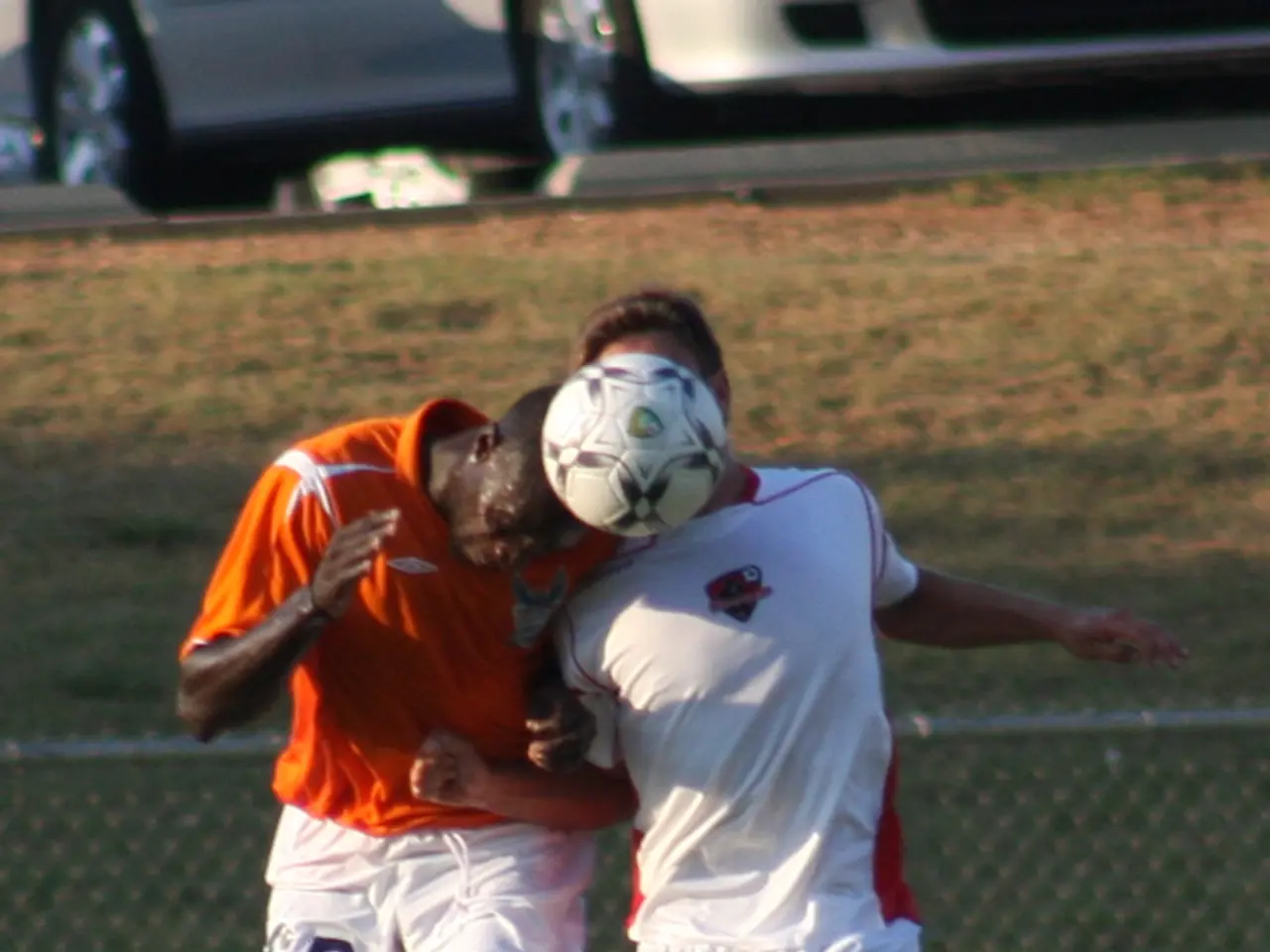Frequent Sports-Related Injuries and the Significance of Swift Medical Attention
In the world of sports, injuries are an unfortunate yet inevitable part of the game. Four of the most prevalent sports injuries - shoulder injuries, fractures, knee injuries, and tendonitis - share common signs, treatments, and preventive measures.
Common Signs
Each injury presents distinct symptoms, but there are some signs that overlap across all four.
- Shoulder injuries can manifest as pain, swelling, limited range of motion, weakness, or instability in the shoulder joint. Symptoms may also include clicking or popping during movement.
- Fractures are characterized by severe localized pain, swelling, deformity, an inability to move or bear weight, bruising, and sometimes visible bone protrusion.
- Knee injuries often cause pain within or around the knee, swelling, stiffness, instability or “giving way,” reduced motion, and sometimes a popping sound at injury.
- Tendonitis is characterized by localized pain, tenderness, swelling along a tendon (common in shoulders, knees, or elbows), stiffness especially in the morning or after inactivity, and reduced function.
Treatments
Initial treatment for all four injuries involves rest, ice, and compression. Rehabilitation programs focus on stretching, strengthening exercises, and physiotherapy modalities like electrotherapy. In severe cases, surgical intervention may be necessary.
- Shoulder injuries require rehabilitation programs that focus on stretching, strengthening exercises, and physiotherapy. Severe cases, such as labrum tears, may necessitate surgical intervention.
- Fractures are typically treated with immobilization using casts or splints, pain management, and sometimes surgery to align bones. Following treatment, gradual rehabilitation is required for regaining strength and mobility.
- Knee injuries treatment depends on their severity. Mild cases may only require rest, ice, compression, elevation (RICE), physical therapy, and bracing. More severe injuries, such as ligament tears or cartilage damage, may require surgery.
- Tendonitis treatment includes rest, ice, anti-inflammatory medications, physiotherapy focusing on eccentric exercises and a gradual return to activity, and modifying activities to reduce tendon stress.
Preventative Measures
Prevention is better than cure, and there are several strategies to help athletes avoid these common sports injuries.
- Proper warm-up and cool-down routines before and after physical activity are essential to prepare muscles and joints.
- Strengthening muscles around vulnerable joints (e.g., core, hip, and hamstring muscles for knee stability) can help prevent injuries.
- Improving flexibility through regular stretching reduces the risk of strains and muscle tightness.
- Using correct sports techniques minimizes unnecessary joint stress and impact.
- Wearing appropriate, sport-specific protective gear such as braces, pads, or supportive footwear provides additional protection.
- Avoiding overtraining by incorporating rest days and cross-training prevents overuse injuries like tendonitis.
For shoulder-specific prevention, incorporating exercises to enhance shoulder stability and participating in injury prevention programs tailored by clinicians are recommended.
Remember, tendonitis is a common overuse injury among athletes, affecting the tendons which connect muscle to bone. Emphasizing proper form and allowing sufficient recovery time are imperative strategies for athletes seeking to avoid tendonitis and overuse injuries. Rest periods in training regimens are vital for preventing recurrence of tendonitis and overuse injuries.
Overuse injuries develop gradually over time, often due to inadequate rest and recovery, improper technique, or rapid increases in training intensity. Tendonitis most frequently affects the elbows, wrists, shoulders, and knees, causing pain, swelling, and a diminished range of motion.
Consulting with healthcare professionals for tailored therapeutic interventions can aid in recovery from tendonitis and overuse injuries. By understanding these common sports injuries, their signs, treatments, and preventive measures, athletes can take proactive steps to minimise their risk of injury and ensure a safer, more enjoyable sports experience.
- Science can help athletes prevent and manage sports injuries by developing effective warm-up and cool-down routines, strengthening exercises, injury prevention programs, and proper sports techniques in health-and-wellness and fitness-and-exercise fields.
- Proper treatment of sports injuries, such as shoulder injuries, fractures, knee injuries, and tendonitis, often involves a combination of rest, ice, compression, rehabilitation exercises, and, in some cases, surgery for immediate pain relief and long-term recovery in sports-related health and wellness.




